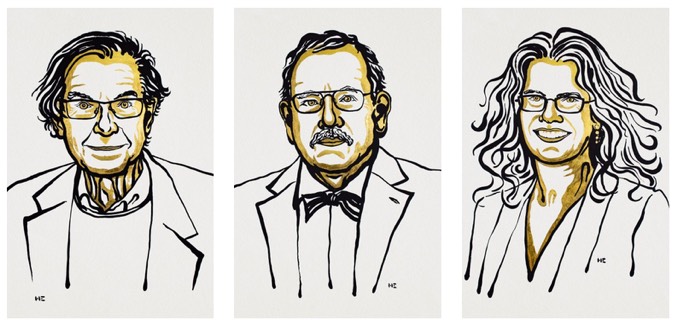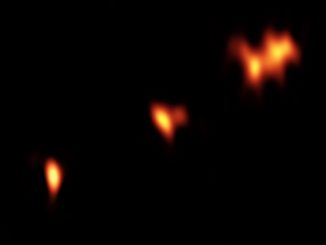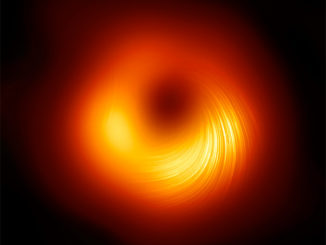
The 2020 Nobel Prize in Physics was awarded to Sir Roger Penrose for discovering that black hole formation is a “robust” prediction of general relativity theory and to Reinhard Genzel and Andrea Ghez for their trail-blazing discovery of the supermassive black hole at the Center of the Milky Way.
Penrose “used ingenious mathematical methods in his proof that black holes are a direct consequence of Albert Einstein’s general theory of relativity,” according to the Royal Swedish Academy of Sciences. “His ground-breaking (1965) article is still regarded as the most important contribution to the general theory of relativity since Einstein.”
The black hole solution of Einstein’s equations in honor of today’s #NobelPrize2020 announcement: pic.twitter.com/yVxCOaYSGE
— Brian Greene (@bgreene) October 6, 2020
Genzel, at the Max Planck Institute for Extraterrestrial Physics, Garching, Germany, and Ghez, at the University of California at Los Angeles, were honoured for decades of pioneering work monitoring the central regions of the Milky Way and providing “the most convincing evidence yet of a supermassive black hole” at the heart of the galaxy.
“The discoveries of this year’s Laureates have broken new ground in the study of compact and supermassive objects,” said David Haviland, chair of the Nobel Committee for Physics. “But these exotic objects still pose many questions that beg for answers and motivate future research. Not only questions about their inner structure, but also questions about how to test our theory of gravity under the extreme conditions in the immediate vicinity of a black hole.”
One half of the 10 million Swedish kronor awarded for the Nobel Prize in Physics will go to Penrose with the other half split between Genzel and Ghez.



